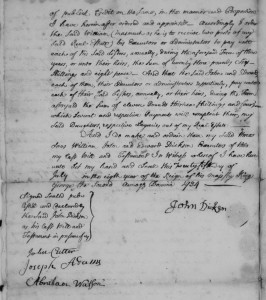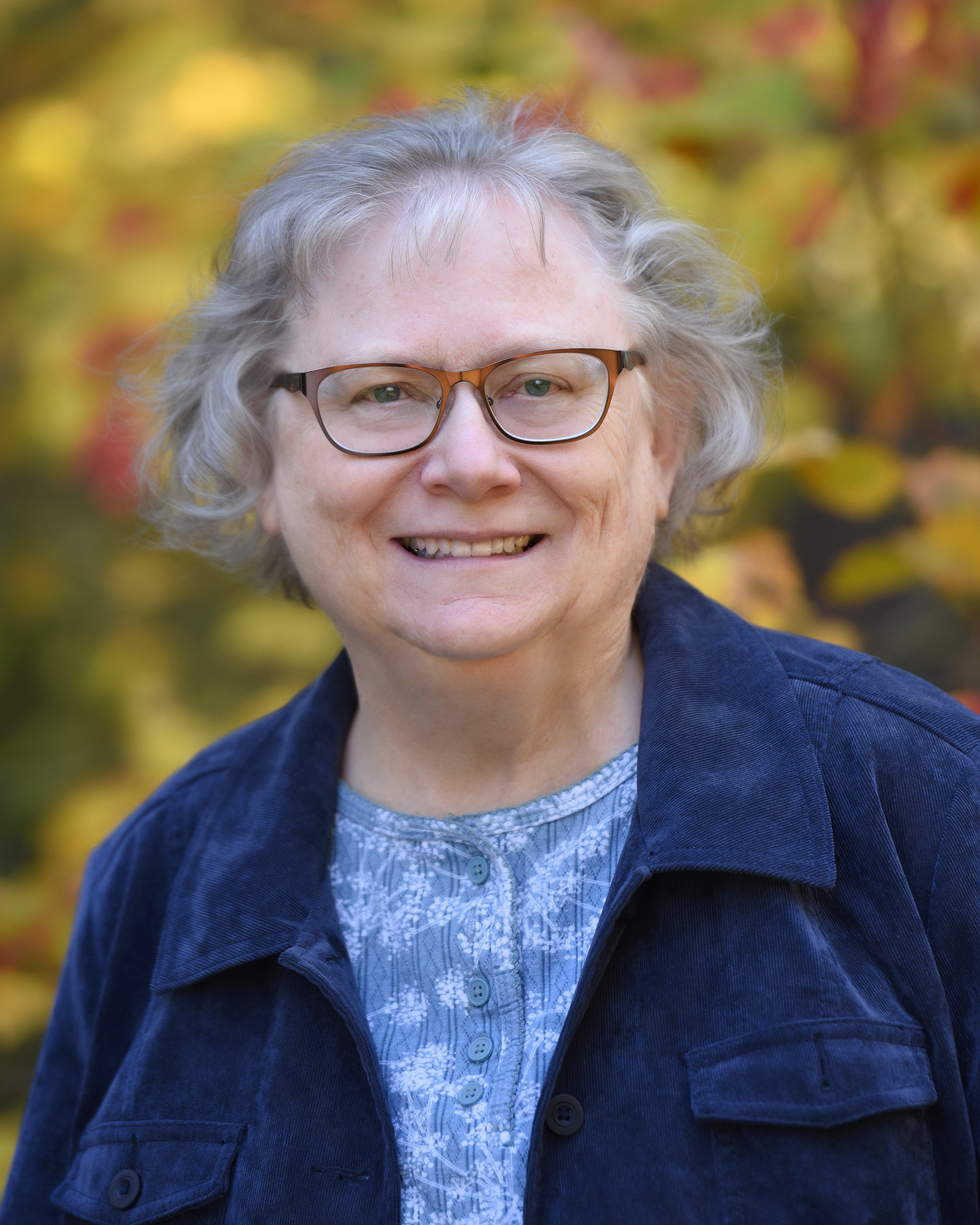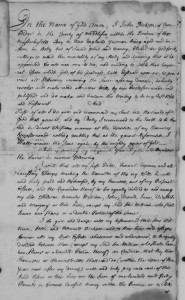It has taken me a while to find a short and simple enough example of a will to use for this basic introduction to probate records. The will of John Dickson of Cambridge, yeoman, illustrated here, meets the short qualification although it has an interesting complication. The full probate file can be seen on AmericanAncestors.org under Middlesex County, MA, Probate File Papers, 1648-1871, Case #6264, John Dixson-Dickson-Dikson. There are 28 papers in the file.
Testate Estate: Where someone has written or dictated a will describing exactly how he or she wishes to leave his or her property and to whom. For the most part, a testator could leave anything to anyone, unless they were dealing with colonies such as Virginia that followed the laws of primogeniture where all real estate was left to the oldest son. This did not apply in New England, although it was customary to follow the legal model of giving a double share to the oldest son. A legitimate heir who was left out of a will could potentially contest it in court, thus the bequests of one pound or one dollar to cover any claim that someone had been accidentally forgotten.[1]
The testator would name an executor/executrix and perhaps additional overseers to help. When the will was brought in for probate, the Court would approve the executor and appoint three (impartial) men to take the inventory of the estate. The executor would swear to the completeness and accuracy of the inventory (i.e., nothing was hidden from the appraisers) and keep accounts of the costs for the funeral, burial, and other expenses, for which he would be reimbursed out of the estate before any other distributions were made. [There’s a lot more, but we’re trying to keep it simple right now.]
The testator in this case is John2 Dickson/Dixon, son of William1 and Jane/Jean (––) Dickson of Cambridge. John was born in 1656 and died in his eighty-second year in 1737. His wife was Margery/Margaret Winship, who predeceased him by three years. They had six children: Jane, who married (1) Joseph Robbins and (2) John Green; Elizabeth, who married (1) Hubbard Russell and (2) Joseph Holden; William, who married Ruth Prentice; John, who married Mary Russell; Margery, who married Samuel Carter; and Edward, who married Martha Dunster.[2]
 Homework: Okay, I know you’re going to look anyway, so read through the probate record to find out the complication and meet me back here next week.
Homework: Okay, I know you’re going to look anyway, so read through the probate record to find out the complication and meet me back here next week.
Continued here.
Notes
[1] Which reminds us of the old joke, “I promised my grandson that I would remember him in my will. Well, I remember him.”
[2] Lucius R. Paige, History of Cambridge, Mass. 1630 to 1877 (Boston, 1877), p. 535.
Share this:

About Alicia Crane Williams
Alicia Crane Williams, FASG, Lead Genealogist of Early Families of New England Study Project, has compiled and edited numerous important genealogical publications including The Mayflower Descendant and the Alden Family “Silver Book” Five Generations project of the Mayflower Society. Most recently, she is the author of the 2017 edition of The Babson Genealogy, 1606-2017, Descendants of Thomas and Isabel Babson who first arrived in Salem, Massachusetts, in 1637. Alicia has served as Historian of the Massachusetts Society of Mayflower Descendants, Assistant Historian General at the General Society of Mayflower Descendants, and as Genealogist of the Alden Kindred of America. She earned a bachelor’s degree from the University of Connecticut and a master’s degree in History from Northeastern University.View all posts by Alicia Crane Williams →
